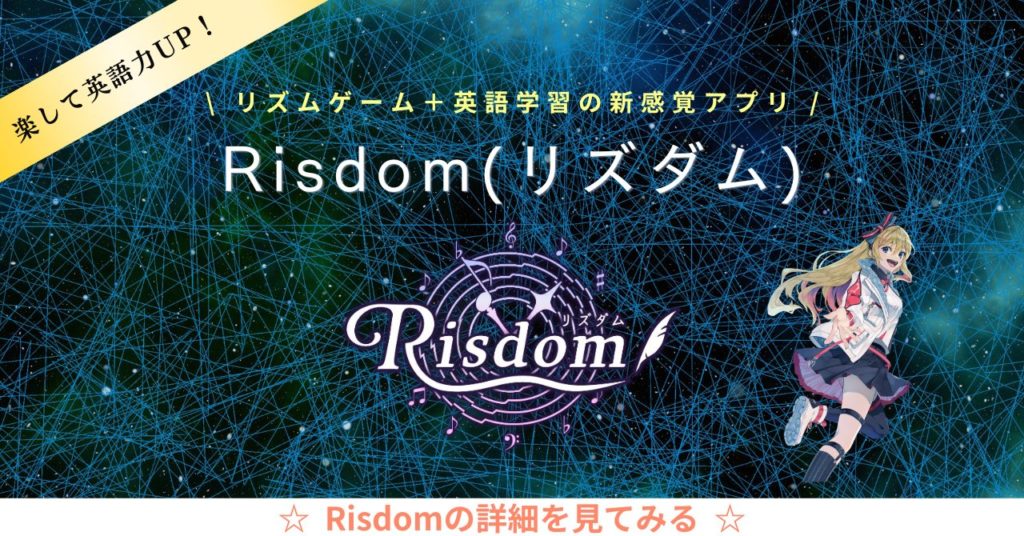啓林館 高1LANDMARK Lesson5 Part2の本文の日本語訳と重要箇所の解説です。
Lesson5-1, 5-3, 5-4の解説はこちらからご覧ください。
>高1LANDMARK Lesson5 Part1 本文和訳
>高1LANDMARK Lesson5 Part3 本文和訳
>高1LANDMARK Lesson5 Part4 本文和訳
- LANDMARK Lesson5 Part2 本文と日本語訳
- LANDMARK Lesson5 Part2 重要事項の解説
- As a first step, he received various types of training with his handler, Yuko.
- For example, they learned how to act around people with brain disorders.
- They also learned how to prevent infections.
- The hygiene problems that dogs could cause for hospital patients was a concern in the beginning.
- However, appropriate management and proper vaccinations helped ease this concern and allowed them to focus on their work.
- For the second step, Bailey worked on a trial basis at Shizuoka Children’s Hospital.
- After this trial period, he started his full-time work at this hospital.
- At that time, there were some doubts about his usefulness.
- However, believe it or not, he easily did things that humans could not do.
- For example, he helped a boy who had repeated surgery for a brain tumor and made him smile again.
- Another boy who could not talk or move his body was able to open his eyes for Bailey.
- LANDMARK Lesson5 Part2 まとめ
LANDMARK Lesson5 Part2 本文と日本語訳
Q1. What did Bailey and Yuko learn?
「ベイリーユウコさんは何を学びましたか?」
Q2. What was the concern about a facility dog in the beginning?
「初めの頃のファシリティードッグに対する懸念点は何でしたか?」
How did Bailey become a facility dog at a hospital?
「ベイリーはどうやって病院でファシリティードッグになったでしょうか?」
As a first step, he received various types of training with his handler, Yuko.
「第一段階として,彼はトレーナーのユウコさんと様々な種類の訓練を受けました。」
For example, they learned how to act around people with brain disorders.
「例えば,彼らは脳疾患をもつ人の周りでどう行動すべきかを学びました。」
They also learned how to prevent infections.
「また,感染症を防ぐ方法も学びました。」
The hygiene problems that dogs could cause for hospital patients was a concern in the beginning.
「犬が病院の患者に引き起こす可能性がある衛生状態の問題が,初めの頃は懸念事項でした。」
However, appropriate management and proper vaccinations helped ease this concern and allowed them to focus on their work.
「しかし,適切な管理と適切な予防接種によってこの懸念はなくなり,彼らは仕事に集中できるようになりました。」
For the second step, Bailey worked on a trial basis at Shizuoka Children’s Hospital.
「第二段階では,ベイリーは試験的に静岡県立こども病院で働きました。」
After this trial period, he started his full-time work at this hospital.
「この試験期間の後,彼はこの病院でフルタイムで働き始めました。」
At that time, there were some doubts about his usefulness.
「当時,彼の有用性について疑いもありました。」
However, believe it or not, he easily did things that humans could not do.
「しかし,信じられない話でしょうが,彼は人間ができなかったことを簡単にやりました。」
For example, he helped a boy who had repeated surgery for a brain tumor and made him smile again.
「例えば,彼は脳腫瘍の手術を繰り返してきた少年を助け,彼を再び笑顔にしました。」
Another boy who could not talk or move his body was able to open his eyes for Bailey.
「話したり体を動かしたりできなかった別の少年はベイリーを見るために目を開けることができました。」

LANDMARK Lesson5 Part2 重要事項の解説
As a first step, he received various types of training with his handler, Yuko.
“as”は「~として」という前置詞で,“first”は「最初の,第一の」という形容詞,“step”は「段階,一歩」といった名詞です。
“receive”は「を受け取る,受ける」という動詞で,“various”は「様々な」という形容詞になります。
“type”は「種類,タイプ」,“handler”は「トレーナー,調教師」といった名詞ですね。
“of”は前置詞で,”A of B”の形で「BのA」というように後ろから前に訳します。
また,“his handler”と“Yuko”は「同格語」になります。“名詞,名詞”の並びは「同格語」の可能性が高いですよ!
For example, they learned how to act around people with brain disorders.
“for example”は「例えば」という重要表現ですね。
“they”は“BaileyとYuko”を指しています。
“how to 動詞の原形”は「疑問詞+不定詞」で,「~のしかた,どう~すべきか」といった意味ですね。
“learn”は「を学ぶ,習得する」,“act”は「行動する」という動詞で,“around”は「~の周りで」という前置詞です。
“brain”は「脳」,“disorder”は「障害,疾患」という名詞になります。
They also learned how to prevent infections.
“They”は“BaileyとYuko”を指しています。
“also”は「また,さらに」といった副詞で,付け加える役割があります。色々な文で使うので必ず覚えましょう!
“prevent”は「を防ぐ」という動詞で,“infection”は「感染症」という名詞です。
The hygiene problems that dogs could cause for hospital patients was a concern in the beginning.
“hygiene”は「衛生状態」,“problem”は「問題」という名詞です。
また,“that”は「主格の関係代名詞」で,“that dogs could cause for hospital patients”が先行詞“The hygiene problems”を修飾しています。
“cause”は「を引き起こす」という動詞で,“patient”は「患者」,“concern”は「心配,懸念点」といった名詞になります。
“in the beginning”は「初めは,最初の頃は」といった表現です。
However, appropriate management and proper vaccinations helped ease this concern and allowed them to focus on their work.
“however”は「しかし」という意味の副詞になります。
同じ意味で“but”がありますが,こちらは接続詞なので品詞が異なります。“but”は“文A,but 文B”というように,2つの文を繋ぐ際に使います。
“文A. But 文B.”というように,“but”を文の先頭に置いて1文だけで完結させるのは原則NGとなります。
“appropriate”と“proper”はどちらも「適切な」という形容詞になります。“management”は「管理,経営」,“vaccination”は「予防接種」という名詞です。
“help 動詞の原形”は「~するのを手伝う・助ける」という意味で,“ease”は「をなくす,和らげる」という動詞です。
“allow 人 to 動詞の原形”は「人が~するのを許す,人が~をできるようにする」といった重要表現になります。“focus on~”は「~に焦点を当てる,集中する」という意味ですね。
また,この文のように主語が「人以外」のときは,主語の部分を「~によって」と訳すと綺麗な日本語にしやすいですよ!
For the second step, Bailey worked on a trial basis at Shizuoka Children’s Hospital.
“second”は「第二の」といった形容詞です。
“on a trial basis”は「試験的に」という表現になります。
After this trial period, he started his full-time work at this hospital.
“after”は「~の後で」という前置詞で,“trial”は「試験,検査」,“period”は「期間,時代」という名詞になります。
At that time, there were some doubts about his usefulness.
この文では「there構文」が使われていますね。
“at that time”は「そのとき,その当時」という意味になります。
“some”は「いくつかの」という形容詞で,“doubt”は「疑い」という名詞ですね。発音は「ダウト」なので要注意です!
“usefulness”は「有用性」という名詞ですね。
However, believe it or not, he easily did things that humans could not do.
“believe it or not”は「信じられない話ですが,驚くべきことに」といった表現になります。
“easily”は「簡単に」という副詞で,“thing”は「もの,こと」という名詞です。
また,“that”は「主格の関係代名詞」で,“that humans could not do”が先行詞“things”を修飾しています。
For example, he helped a boy who had repeated surgery for a brain tumor and made him smile again.
“who”は「主格の関係代名詞」で,“who had repeated surgery for a brain tumor”が先行詞“a boy”を修飾しています。
また,「過去完了」も使われていて,“repeat”は「を繰り返す」という動詞,“surgery”は「手術」,“tumor”は「腫瘍」という名詞になります。
“make 人・もの 動詞の原形”で「人・ものに~させる」という使役の意味になります。
Another boy who could not talk or move his body was able to open his eyes for Bailey.
“another”は「別の,他の」という形容詞ですね。
“who”は「主格の関係代名詞」で,“who could not talk or move his body”が先行詞“Another boy”を修飾しています。
“be able to 動詞の原形”は「~することができる」という重要表現です。助動詞“can”と同じ意味ですね。
LANDMARK Lesson5 Part2 まとめ
以上がLANDMARK Lesson5 Part2の日本語訳となります。
「関係詞」「過去完了」などの作り方をしっかり確認しておきましょう!
>高1LANDMARK Lesson5 Part1 本文和訳
>高1LANDMARK Lesson5 Part3 本文和訳
>高1LANDMARK Lesson5 Part4 本文和訳
何か分からない点や他に解説してほしい点があれば,お気軽にコメントしてください!



コメント